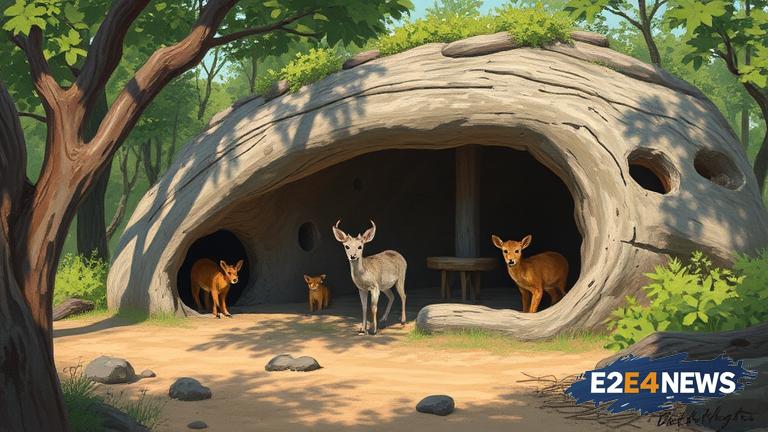In a groundbreaking development, artificial hideaways are being created to provide a safe and welcoming environment for wildlife. These hideaways, also known as artificial refuges, are designed to mimic the natural habitats of various species, offering them a secure place to rest, hide, and thrive. The initiative has been met with enthusiasm from conservationists and wildlife experts, who believe that these artificial hideaways can play a crucial role in supporting the declining populations of many species. By providing a safe haven, these hideaways can help reduce the risk of extinction and promote biodiversity. The concept of artificial hideaways is not new, but recent advancements in technology and design have made them more effective and accessible. The hideaways are being constructed using a variety of materials, including wood, metal, and plastic, and are designed to blend in with their surroundings. They are also equipped with features such as cameras, sensors, and monitoring systems, which enable researchers to track the behavior and population dynamics of the species using them. The data collected from these hideaways can be used to inform conservation efforts and develop more effective strategies for protecting wildlife. One of the key benefits of artificial hideaways is that they can be tailored to meet the specific needs of different species. For example, some hideaways may be designed with specific types of vegetation or water features to attract certain species. Others may be equipped with specialized features, such as nesting boxes or perches, to support the breeding and roosting habits of particular species. The use of artificial hideaways is not limited to any particular region or country, and they can be found in a variety of habitats, including forests, grasslands, and wetlands. In fact, many countries are now incorporating artificial hideaways into their conservation plans, recognizing the important role they can play in supporting wildlife populations. The creation of artificial hideaways is also providing opportunities for community engagement and education. Many organizations are involving local communities in the design and construction of hideaways, raising awareness about the importance of conservation and the need to protect wildlife habitats. Additionally, the hideaways are being used as a tool for environmental education, teaching people about the different species that use them and the importance of preserving biodiversity. Despite the many benefits of artificial hideaways, there are also some challenges associated with their use. For example, the construction of hideaways can be costly, and there may be concerns about the impact of human activity on the surrounding environment. However, many experts believe that the benefits of artificial hideaways far outweigh the costs, and that they can play a vital role in supporting conservation efforts. In conclusion, the use of artificial hideaways is a promising development in the field of conservation, offering a safe and welcoming environment for wildlife to thrive. As the world continues to urbanize and habitats are destroyed, the need for artificial hideaways will only continue to grow. By supporting the creation of these hideaways, we can help promote biodiversity and protect the many species that call our planet home. The future of conservation looks bright, thanks to the innovative use of artificial hideaways. With continued research and development, these hideaways will become an essential tool in the fight against extinction. As we move forward, it is essential that we prioritize the creation of artificial hideaways and recognize the critical role they play in supporting wildlife populations. By working together, we can ensure that these incredible creatures continue to thrive for generations to come. The importance of artificial hideaways cannot be overstated, and it is crucial that we continue to support their development and use. The benefits of these hideaways are clear, and they have the potential to make a significant impact on conservation efforts. As we look to the future, it is essential that we prioritize the protection of wildlife habitats and the creation of artificial hideaways. By doing so, we can help ensure the long-term survival of many species and promote biodiversity. The use of artificial hideaways is a shining example of human ingenuity and our ability to come together to protect the natural world. It is a testament to our capacity for compassion and our commitment to preserving the beauty and wonder of the world around us.
